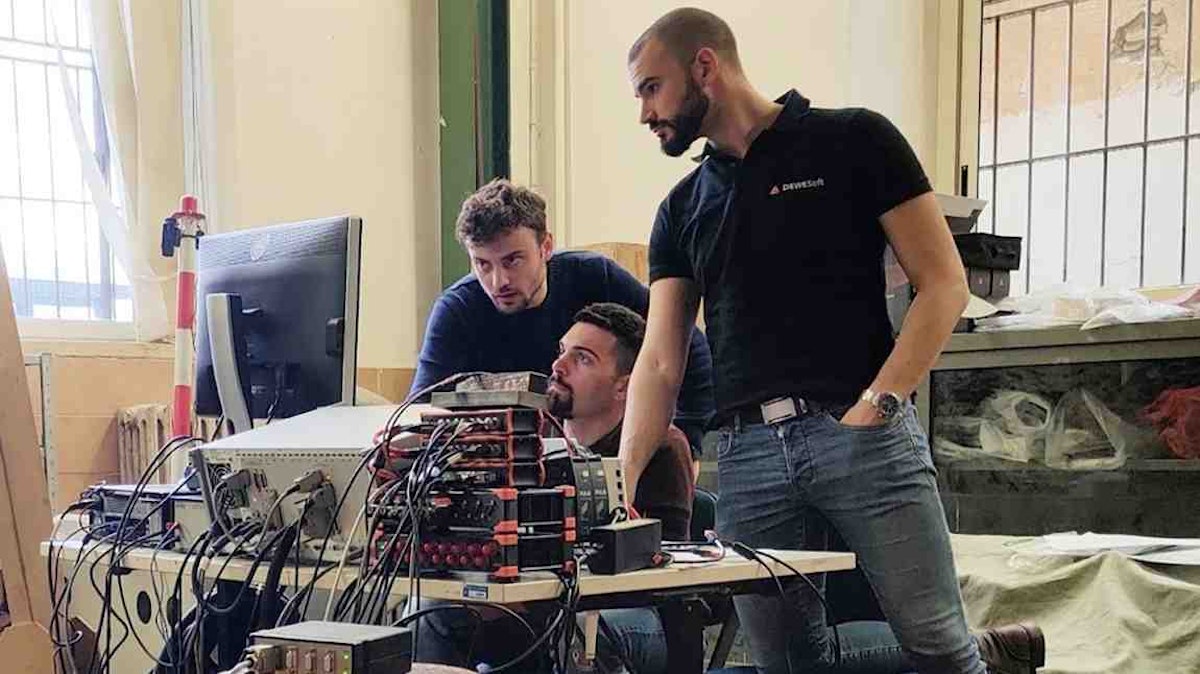Table of contents
Browse categories
Browse authors
 AB
ABAlberto Boffi
 AL
ALAlessia Longo
 AH
AHAl Hoge
 AB
ABAljaž Blažun
 BJ
BJBernard Jerman
 BČ
BČBojan Čontala
 CF
CFCarsten Frederiksen
 CS
CSCarsten Stjernfelt
 DC
DCDaniel Colmenares
 DF
DFDino Florjančič
 EB
EBEmanuele Burgognoni
 EK
EKEva Kalšek
 FB
FBFranck Beranger
 GR
GRGabriele Ribichini
Glacier Chen
 GS
GSGrant Maloy Smith
 HB
HBHelmut Behmüller
 IB
IBIza Burnik
 JO
JOJaka Ogorevc
 JR
JRJake Rosenthal
 JS
JSJernej Sirk
 JM
JMJohn Miller
 KM
KMKarla Yera Morales
 KD
KDKayla Day
 KS
KSKonrad Schweiger
Leslie Wang
 LS
LSLoïc Siret
 LJ
LJLuka Jerman
 MB
MBMarco Behmer
 MR
MRMarco Ribichini
 ML
MLMatic Lebar
 MS
MSMatjaž Strniša
 ME
MEMatthew Engquist
 ME
MEMichael Elmerick
 NP
NPNicolas Phan
 OM
OMOwen Maginity
 PF
PFPatrick Fu
 PR
PRPrimož Rome
 RM
RMRok Mesar
 RS
RSRupert Schwarz
 SA
SASamuele Ardizio
 SK
SKSimon Kodrič
 SG
SGSøren Linnet Gjelstrup
 TH
THThorsten Hartleb
 TV
TVTirin Varghese
 UK
UKUrban Kuhar
Valentino Pagliara
 VS
VSVid Selič
 WK
WKWill Kooiker
Comparing MEMS and IEPE accelerometers for structural vibration behavior testing

Structural and Geotechnical Engineering Department, Sapienza University of Rome
August 28, 2025
Elastoplastic behavior studies through force-displacement hysteresis cycles are essential to understanding how structures behave when exposed to cyclic loads, e.g., those generated by earthquakes. The Sapienza University in Rome studied the plastic behavior of a scale model comparing the performance of IEPE and MEMS accelerometers. The aim was to identify the type of accelerometer providing the signals most consistent with those of a laser displacement sensor.

The Structural and Geotechnical Engineering Department of Sapienza University in Rome, Italy, studied plastic behavior by analyzing the cyclic loads applied to a scale structure placed on a shaking table.
This analysis through force-displacement hysteresis loops allows us to examine the structure's energy dissipation capacity and evaluate its plastic behavior in detail.
The laboratory
The Materials and Structures Laboratory of the Structural and Geotechnical Engineering Department of the Sapienza University of Rome came to being in the early sixties. Nowadays, the activities it’s hosting focus on three different areas;
the field of teaching,
the scientific field, with experiments on materials and models,
the services to public or private bodies by providing analysis of the mechanical characteristics and any related official certification of materials and prototypes related to civil and industrial constructions.
The Laboratory is an official research and testing laboratory for the execution of tests on construction materials and carries out:
Tests on steels, concrete, mortars, bricks, profiles, and metal mesh.
Tests on structural elements and models, even at full scale.
Calibration and verification of the reading scales of the measuring instruments.
The fundamental testing machines present within the laboratory are:
Presses, maximum capacity 1500kN and 5000kN.
Traction machines, maximum load of 500kN and 1000kN.
Electronically controlled MTS universal machine for static and dynamic tests, maximum load 500kN (static load), piston stroke ± 100 mm, maximum frequency up to a few tens of Hz.
A double-acting Schenck jack (traction and compression) with electronic control, maximum load 250kN, piston stroke 400 mm, maximum frequency in the order of a hundred Hz.
A Pulsator with a pair of 20t jacks and a 100t jack. Also, for cyclic tests at a maximum frequency of 10 Hz.
Electrodynamic stirrer, complete with power supply/amplifier, peak sinusoidal force 100 N, maximum acceleration 588 m/s2, maximum displacement 10 mm.
MOOG L081-324-11 shaking table.
The vibration shaker
The vibration shaker or shaking table is used in engineering to subject structures to controlled dynamic loads similar to those generated by earthquakes and other stresses. This machine is fundamental for laboratory experimentation. It allows engineers to evaluate structural behavior under simulated seismic or dynamic loading conditions over time.
The main components of a vibration table are:
Vibration platform: The shaker has a flat, solid surface, subject to controlled vibrations. It can vary in size according to needs, allowing the positioning of structures of different scales.
Vibration system: The shaker is equipped with a drive system, for example, electric or hydraulic motors, that generates vibrations. This system applies dynamic loads in a controlled manner to the tested structure.
Control system: An integrated control system regulates the frequency, amplitude, and energy of vibrations applied to the table. Precise control is essential to reproduce the desired load conditions during testing.
Measurement instrumentation: The shaker is equipped with sensors and instrumentation to measure the dynamic response of the tested structure, for example, accelerometers, strain gauges, and force transducers.
The Moog L081-324-11 shaking table used by the laboratory has the following characteristics:
dimensions of the vibrating table are 1.5 x 1.5 m
maximum stroke of ± 200 mm
maximum load capacity of 2 tons
4-story frame with a floor of 0.60 m x 0.60 m and an inter-story height of 0.60 m
total height of 2.40 m.
This frame is connected to a steel plate of dimensions 0.68 m x 0.76 m, connected to the table via an elastomeric isolator and four-ball load transfer elements.
Shaker testing applications
Seismic Behavior Analysis: The shake table simulates seismic loads, allowing engineers to study the response of buildings and other structures to seismic forces.
Structural Model Validation Testing: Structures can be subjected to vibration to validate and calibrate numerical models and simulations to ensure an accurate match between experimental data and model predictions.
Evaluation of Structural Resistance: Tests to evaluate the seismic resistance of structures, identifying possible weak points and evaluating the ability to absorb energy without suffering irreversible damage.
Testing the Efficiency of Anti-seismic Devices: The shaking table tests the effectiveness of anti-seismic devices, such as seismic isolators and dampers, designed to reduce the transmission of seismic forces to structures.
Study of Plastic Behavior: Tests to study the plastic behavior of structures in the presence of cyclic loads similar to those generated by earthquakes.
Characterization of Materials: The shaking table can characterize materials, evaluating their response to vibrations and cyclic stresses.
Structural Design and Optimization: The results obtained from shaking table tests provide crucial data for designing and optimizing structures, improving their safety and seismic resilience.
Overall, using a shake table allows engineers to perform various controlled tests. They can replicate realistic dynamic conditions and provide data critical for seismic design and construction safety.
Plastic behavior: single-frequency cyclic loads
How do you study the plastic behaviors of structures subjected to earthquakes? With the vibration shaker, it is possible to carry out cyclic load tests to identify the elastic-plastic behavior of the structures.
Performing integration, you can obtain the displacement values and the force-displacement ratios through accelerometers. The analysis of force-displacement hysteresis cycles is the core of the analysis that leads to understanding the plastic mechanisms of the structure.
The shape and width of the hysteresis curves reflect the structure's ability to dissipate energy during dynamic events. This information is critical for designing energy dissipation systems, such as viscous or pendulum dampers, which can improve the structure's earthquake resilience.
Analysis of crucial points of hysteresis curves, such as the yield and collapse point, offers a detailed understanding of structural performance. This data is the basis for developing plastic behavior models that improve the accuracy of predictive analysis of cyclic loading situations.
The shaking table plays a crucial role in structural engineering. It is a versatile means for extrapolating broad-spectrum information. It is possible to improve the response capacity of structures in dynamic situations, such as earthquakes. Through these cycles, engineers can observe how the structure reacts under cyclic loads, providing a detailed analysis of the structure's limitations and capabilities.
Measurement setup
The models proposed in Figures 5 and 6 represent a four-story frame with an insulated base. We limited its path through limit switches (bumpers). Our testing involved subjecting the model to time-variable dynamic forces through a vibrating table. The use of bumpers was fundamental to avoid alterations to the measurements due to the collision of the base with the platform.
We installed two accelerometer types on each of the floors of the scale model:
PCB 393A03: IEPE type accelerometer (Integrated Electronics Piezo-Electric)
Dewesoft IOLITEi-3xMEMS-ACC-8g: MEMS type accelerometer (Micro Electro Mechanical Systems).
We measured the displacement of the base through an optoNCDT 1420-500 laser transducer to ensure high measurement precision.
The data acquisition was done by:
Two Dewesoft KRYPTON-4xACC devices: Rugged and distributable EtherCAT data acquisition systems dedicated to IEPE sensors.
One Dewesoft KRYPTON-3xSTG device: Rugged and distributable EtherCAT data acquisition systems dedicated to strain gauges, potentiometers, displacement sensors, and more.
Five IOLITEi-3xMEMS-ACC-8g devices: Integrated DAQ device and 3-axial MEMS accelerometer.
Five PCB 393A03 IEPE sensors: accelerometers with 1V/g sensitivity.
We forced the structure mechanically through single-frequency waves to obtain detailed information on the structure's ability to absorb dynamic loads. The nature of this test also brings advantages from the perspective of analyzing the quality of the response of the transducers in the domain of the structure.
Analysis objectives
This study had two well-defined objectives:
The first aimed at identifying the most suitable accelerometer instrumentation to provide a signal in line with that obtained from the laser displacement sensor. The fidelity of this signal is evaluated as a function of the temporal response of the transducers, generating single-frequency mechanical waves (harmonics).
The final aim instead concerns the study of the elastic-plastic behavior of the structural model as the structural elements characterizing the model itself vary.
Accelerometer technologies
A couple of decades have passed since geotechnics led the entry of geophones (velocimeters) into the world of dynamic analysis. Now, we have overcome the problems of signal phase shift imposed by the velocity meter resonance. Accelerometers, which are less sensitive but extremely more reliable in phase response thanks to their higher resonance frequency, have been introduced.
This project allowed us to understand the importance of analyzing the signal’s phase response, not only depending on the sensor’s resonant nature but also on applying filters to the signal.
The fidelity of a signal generated by an acquisition system concerns the module and the phase. The module indicates how much the perceived wave intensity it reconstructs. The phase is the alter ego of the sensor's temporal response to the event. Both applied sensors generate a signal with very high module and phase fidelity. However, a non-negligible factor occurs in the data processing line generated by one of the two technologies.
The electrical signal generated by piezoelectric technology is in itself very attenuated. It is represented by the movement of the surface electrical charges of the crystal as the mechanical compression forces experienced vary. To use this signal, we must amplify it by increasing the number of charges subject to the displacement imposed by the crystal’s mechanical compressions.
We superimposed the power supply on the signal line to ‘dope’ the crystal with an excess of charges and obtain a broader signal. On the other hand, we got an imposed offset voltage by this charge excitation exactly. You must apply an HP (High Pass) filter to eliminate this offset voltage, generally at 0.5Hz.
This filter has negligible consequences if the frequency band in concern is less than 1Hz. However, if the analyzed structures will be studied continuously across the entire spectrum up to the DC, it is an entirely different matter.
The signal alteration follows different trends for the module and the phase as the order of the filter varies. Theory imposes a module attenuation of -20dB/Decade for each degree of the filter, while the phase undergoes a variation of -90° for each additional filter order. This last detail is not negligible since you, through the order of six, obtain a phase shift of 540°.
It is now possible to understand how the signal generated by the IEPE sensor and then cleaned by the HP filter undergoes non-negligible influences. On the other hand, MEMS technology does not require a filter for signal processing and is without these problems.
Sensor Characteristics
| Model | PCB 393A03 | Dewesoft IOLITEi-3xMEMS-ACC-8g |
| Type | IEPE - Integrated Electronics Piezo-Electric | MEMS - Micro Electro Mechanical Systems |
| Resonance frequency | > 55 kHz | 2.4 kHz |
| Bandwidth | 7 kHz | 1.5 kHz |
| Applied filters | HP (~0.5Hz) | None |
Phase shift - the key role of MEMS
The effect of the attenuation and phase shift of the signal generated by the IEPE sensor is visible in the graphs below – see Figure 9. Thanks to the Bode diagram of the HP filter, we have seen how the effect of attenuation and phase varies as the frequency taken into consideration varies – see Figure 8.
We carried out tests by forcing the structural model with single-frequency mechanical waves. This method gave us a detailed view of the attenuation and phase shift effects of the IEPE sensor’s HP filter: they were strong at 0.25 Hz and then became negligible around 1 Hz.
Figures 9 to 13 show the signal attenuation and phase shift generated by the three types of sensors. The signals shown are as follows:
Purple - IEPE accelerometer
Orange - MEMS accelerometer
Magenta - Laser displacement sensor
Results - behavior at low frequencies
In an elastic-plastic test, you can divide deformations in the structure into two main phases: the elastic and the plastic phase.
In the elastic phase, the deformation is reversible and linear concerning the load application, following Hooke's law. However, once it exceeds the material's yield point, a transition to the plastic phase occurs, and deformations become permanent and non-reversible.
During force-displacement cycles under these conditions, you often observe a change in slope and shape. The material or structure exhibits hysteretic behavior, i.e., the relationship between the applied stress and the resulting deformation is not unique. It means that the structure response depends not only on the current value of the applied stress but also on its loading and deformation history.
This phenomenon can have significant implications in the design and analysis of structures. It affects their ability to withstand repeated loads over time, not suffering permanent damage or structural failure. Understanding and characterizing the hysteretic behavior of materials and structures is critical to ensuring the safety and reliability of engineering applications.
This test highlighted an alteration of the hysteresis cycle. The change did not derive from the structure but from the different signal processing of the two sensor types. The IEPE sensor’s signal was attenuated and out of phase due to the high-pass filter in the data processing chain. On the other hand, the MEMS sensor generated a signal in phase with the laser displacement sensor, showing no variations in module and phase.
Conclusion
When considering MEMS and IEPE accelerometers for vibration acquisition to test structures’ elastoplastic behavior, you must consider the impact of the IEPE accelerometer’s high pass filter. It is an element that could lead to the loss of information at low frequencies.
In this application, MEMS sensors offer high precision and remarkable resolution. They allow the detection of even small changes in acceleration at very low frequencies. Despite being equally precise, IEPE accelerometers may offer lower precision in the vicinity of the continuous component of the frequency spectrum due to the effects of the high pass filter.
IEPE accelerometers can alter the hysteresis loop due to the high-pass filter effect. They may not be ideal for tests that require maximum precision in characterizing the elastoplastic behavior of structures - tests where accurately capturing variations at low frequencies is crucial.
In conclusion, both types of sensors have their advantages and limitations. However, you must pay attention to the impact of the EPE accelerometer’s high-pass filter when accuracy at low frequencies is critical for your testing.
You may use MEMS accelerometers or adopt compensation strategies to mitigate the effect of the IEPE accelerometer’s high-pass filter. Careful consideration of such factors is crucial for selecting accelerometers based on the specific requirements of the test.
For the material provided, many thanks to
Eng. Domenico Pagano
Additional external articles on hysteresis loops:
Hysteresis Modeling of Reinforced Concrete Structures: State-of-the-Art: Sengupta, Piyali; Li, and Bing.
Modeling of Nonlinear Cyclic Load Behavior of I-Shaped Composite Steel-Concrete Shear Walls of Nuclear Power Plants: Ahmer Ali, Dookie Kim, and Sung Gook Cho.